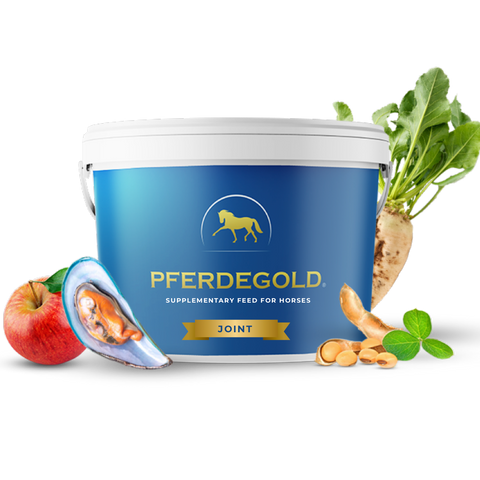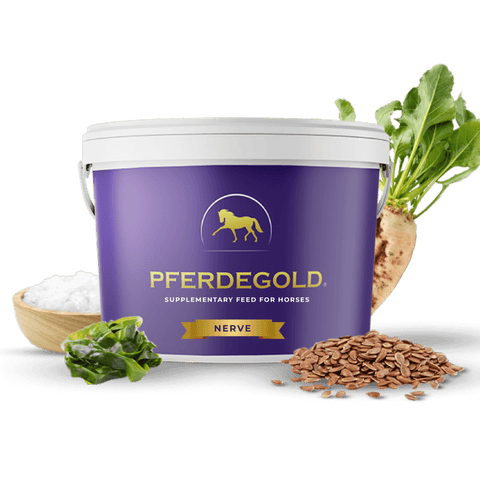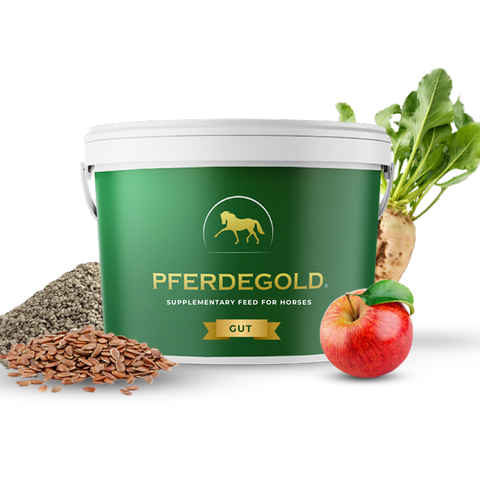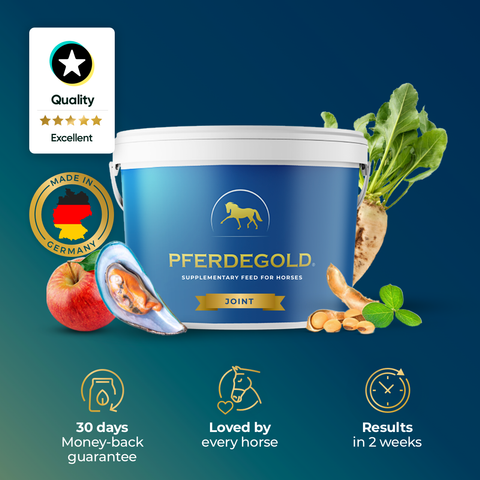
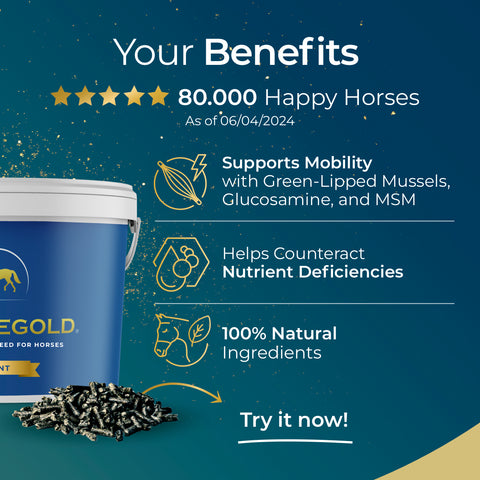
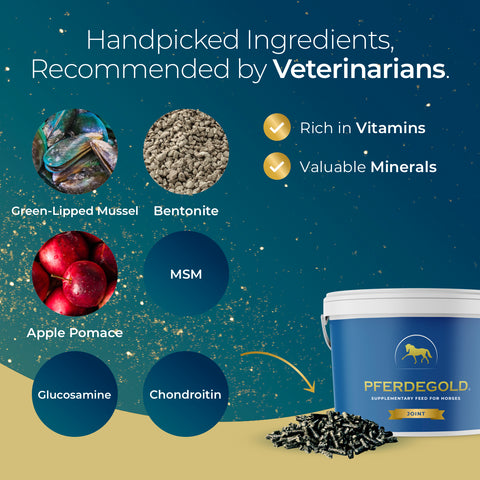
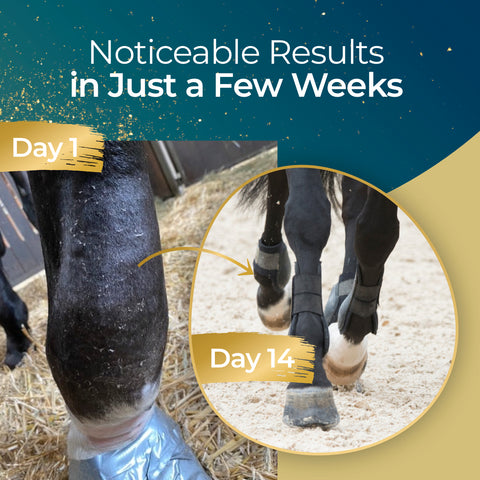
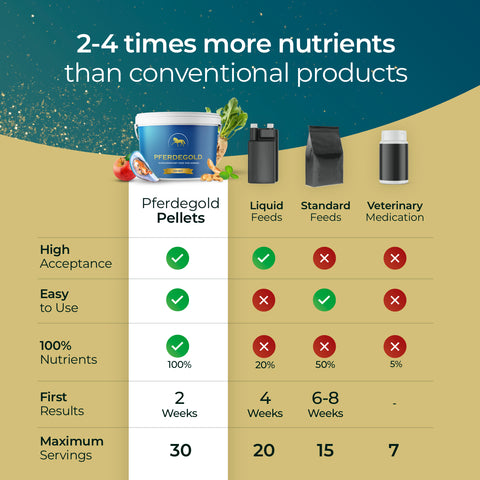
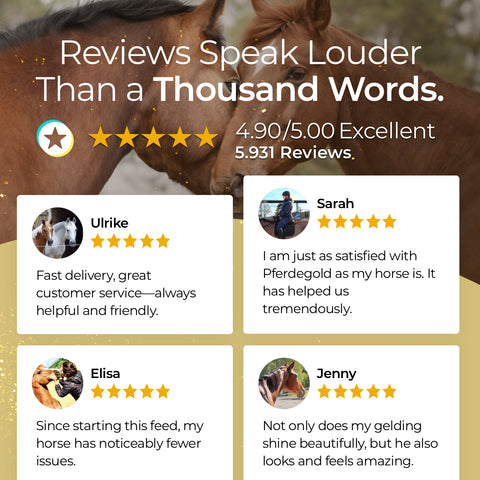
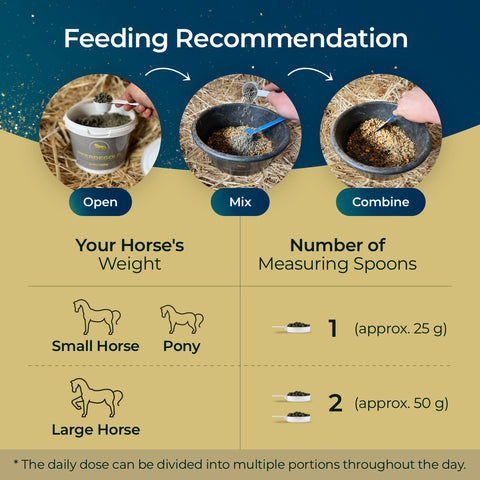


Pferdegold® Joint
- Supports mobility with Omega 3
- Natural joint nutrition for all ages
- Promotes the joy of movement
- Small horse/pony (up to 600 kg): 1 x daily 1 scoop
- Large horse (from 600 kg): 1 x daily 2 measuring spoons
- Simply add the pellets to the feed.
Continuous feeding
Ingredients:
Soy extraction meal (non-GMO), green-lipped mussel, MSM, glucosamine, apple pomace, beet syrup (less than 3 %), chondroitin
- Without industrial sugar
- Without genetic engineering
- Grain-free
Very well tolerated due to pure and researched ingredients
- Suitable for EMS
- Suitable for deer
- Suitable for cushing
Doping-free! The pellets can be fed before and during a competition.
Contents:
1.5 kg = 30 portions = 1 month of use
Advice:
- Regular and long-term use is safe if the feeding recommendations are followed.
- Without known side effects
- If you have any concerns or known allergies, please consult a vet you trust.
Why is Pferdegold better than other products?
Our mission is to create the best products for horses. Here are a few reasons why we are confident that choosing us is the right decision, even today.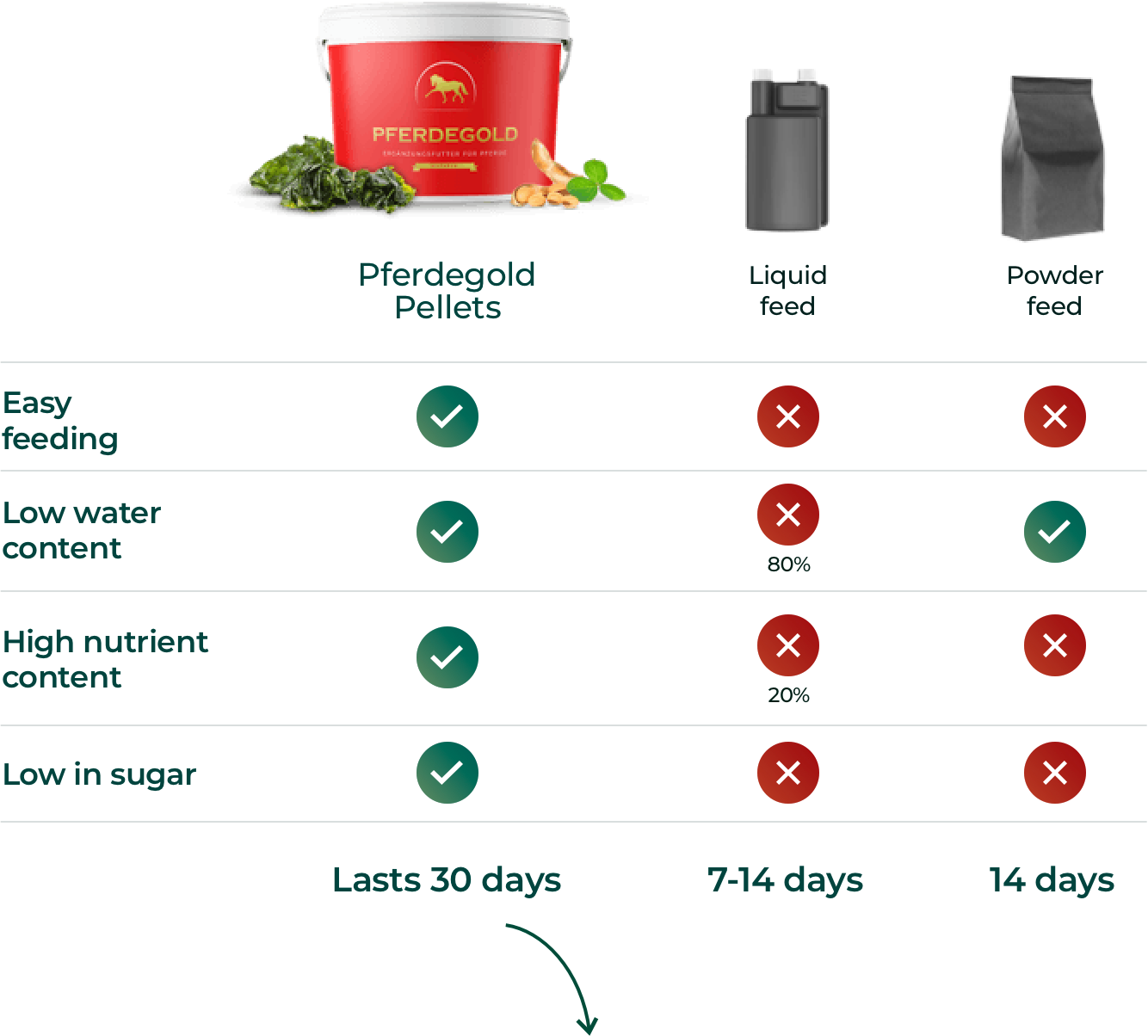

2-4 times more nutrients
than conventional products

9 out of 10 customers
are convinced by Pferdegold Pellets!
8 Reasons Why You’ll Love Pferdegold

Affordable
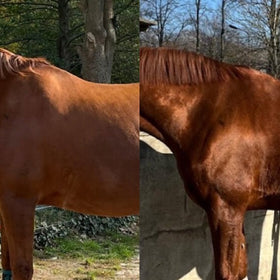
It Really Works
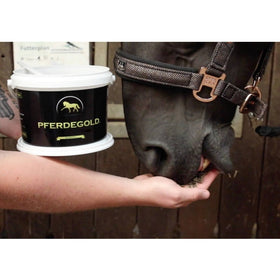
Tastes Great

Fast Results

Money-Back Guarantee
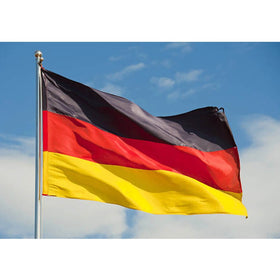
Made in Germany
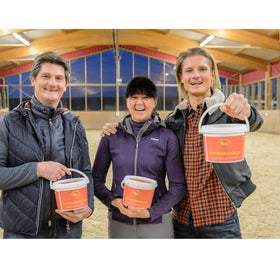
Family Business

Our Promise
Discover our customer stories
Horse Joints
Horse Joints
The mobility and health of the joints are decisive factors for the quality of life and performance of our horses.
Unfortunately, many horses are affected by joint problems, which can take many different forms. We would therefore like to give you a detailed overview of the various aspects of joint health in horses.
From the basic causes that can lead to joint problems, to recognizing the initial symptoms and comprehensive treatment options, our aim is to provide horse owners with practical advice. Our focus is always on what's best for your horse by putting your horse's welfare first at all times.
What are the health consequences of joint problems?
Joint problems in horses can lead to a number of serious health consequences that go far beyond immediate pain and limited mobility. Not only do they affect the horse's ability to walk and play, but they can also lead to chronic pain conditions that require long-term medical treatment.
In the long term, such problems can significantly reduce the horse's quality of life and enjoyment of life, lead to behavioral changes and, in severe cases, even shorten its lifespan. It is therefore crucial for horse owners to take preventative measures at an early stage and to seek expert advice and help from a vet at the first sign of joint disease.
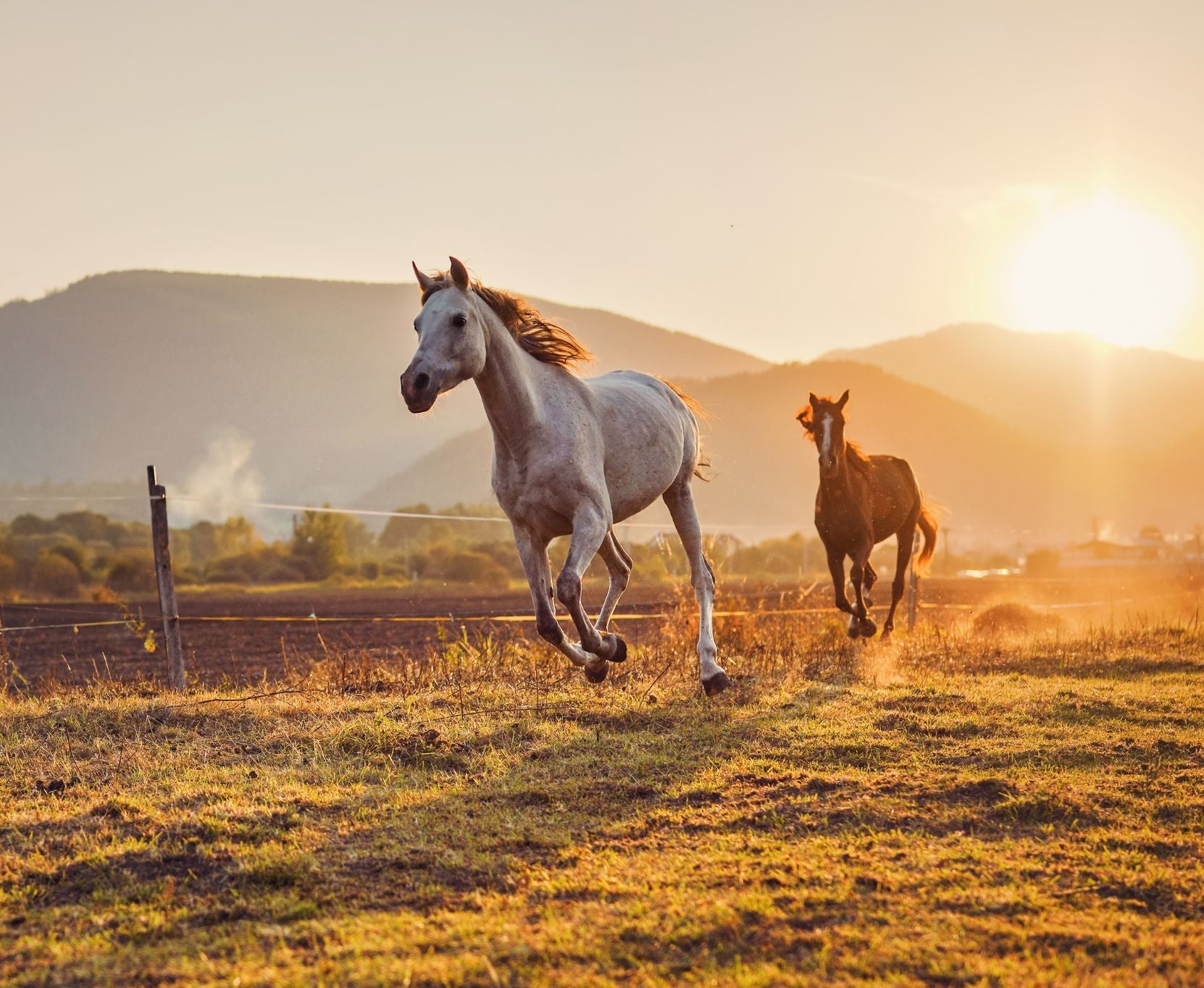
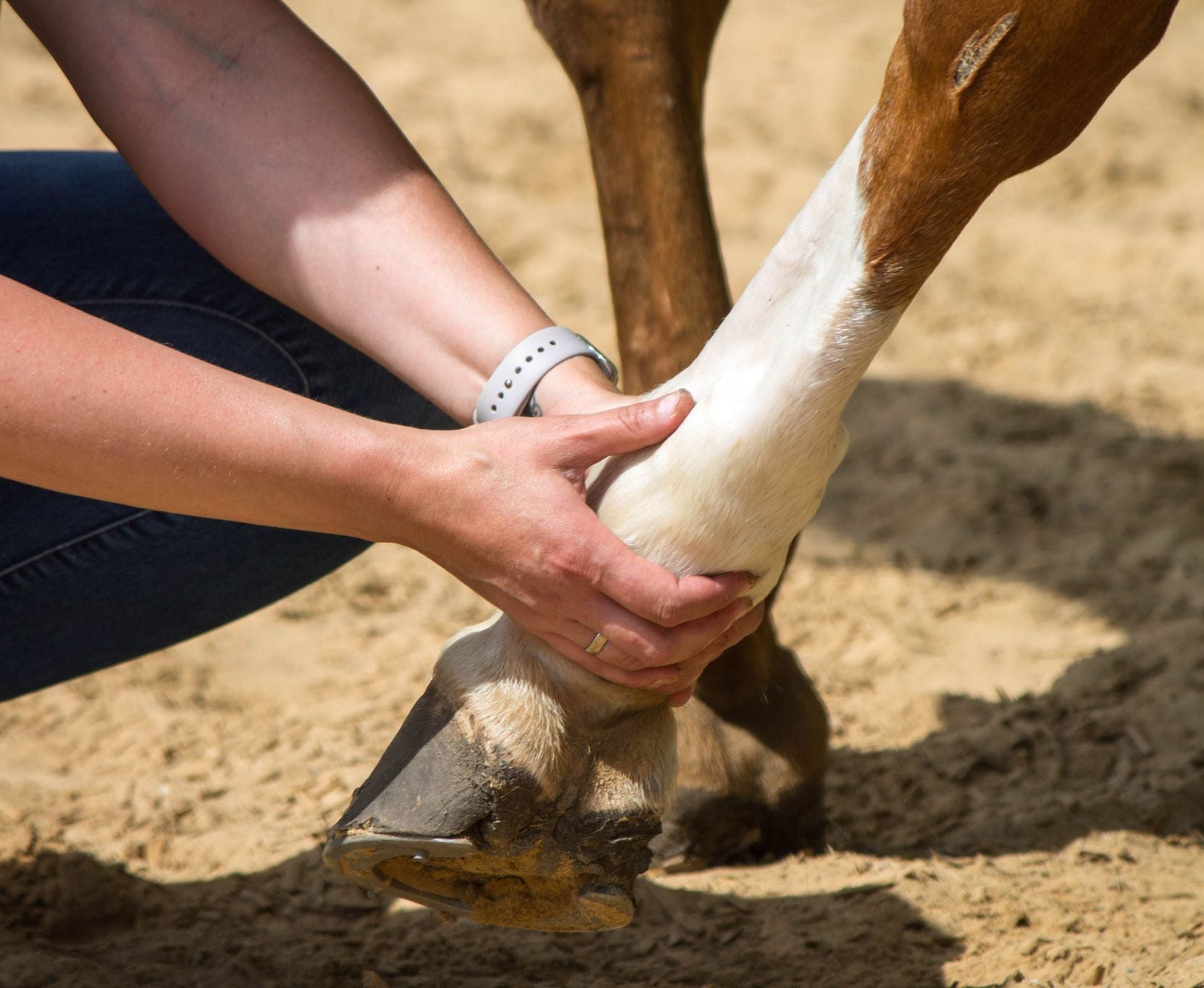
Joint feed offers these benefits for your horse's joints
Supporting your horse with joint feed can offer a range of benefits aimed at providing essential nutrients.
Adequate nutrient intake can help to fill any nutritional gaps, which is essential for maintaining and promoting a horse's vitality.
The specially formulated ingredients in joint feed for horses can support well-being and mobility by providing optimal nutrition for the joints, tendons and ligaments.
This, in turn, can promote the joy of movement and an improved quality of life. Targeted nutrition for horses can have a positive effect on activity and mobility by providing nutrients that can be beneficial for healthy joint function.
Joint problems in horses: Everything you should know!
Joint problems in horses are a widespread problem that can significantly impair the freedom of movement and quality of life of our four-legged friends. The causes of such complaints are varied and range from natural wear and tear of the joints to acute injuries.
✘ Natural wear and tear and ageing
As horses get older, their joints suffer natural wear and tear, which can be exacerbated by regular strain during training or competitions. As the cartilage layer in the joints becomes thinner, its ability to act as a shock absorber is reduced, leading to increased friction between the bones. This friction can further wear down the joint cartilage, causing inflammation and ultimately leading to osteoarthritis. Pain and stiffness are the direct result, as the natural gliding ability of the joints is impaired and mobility decreases.
✘ Injuries and Overloading
Acute injuries and overloading are common causes of joint problems in horses. Activities such as jumping and rapid changes of direction or running on uneven surfaces can increase the risk of sprains, strains and other injuries. Such events lead to direct stress on the joints, promoting inflammation and damage to the surrounding tissue. In some cases, this damage can result in long-term impairment of joint function, with the affected areas often being sensitive to pain and less mobile.
✘ Inflammatory Diseases
Inflammatory diseases such as arthritis represent a significant challenge for the joint health of horses. Causes of these inflammations range from bacterial infections to autoimmune reactions and the consequences of injury. These conditions typically cause pain, lead to visible swelling and significantly limit the mobility of the affected joints. In the long term, they can lead to a progressive deterioration of joint function, which requires specific management and treatment approaches.
✘ Malpositions and genetic predisposition
Misalignment of the limbs and certain predispositions can play a role in the development of joint problems in horses. These structural abnormalities in joint design lead to uneven loading and stress on the joints, which can accelerate the natural wear and tear process. Over time, this can lead to increased susceptibility to joint disease. Early detection and appropriate management strategies such as farriery are crucial to minimize the progression of such conditions and maintain the horse's well-being.
Supplementary feed for horse joints: Which ingredients are essential?
An adequate supply of nutrients and closing nutritional gaps can be important for supporting horses with joint problems.
There are a number of ingredients that can play a role in the horse's well-being and enjoyment of movement.
- Glucosamine: An amino sugar and natural building block of cartilage. Glucosamine is found in cartilage tissue and is important for tissue formation and repair. It is also required for the production of glycosaminoglycans. Glycosaminoglycans are long chains of sugar building blocks that are essential for the structure and fluid retention in joint cartilage.
- Chondroitin sulphate: is a complex carbohydrate (polysaccharide), i.e. a polysaccharide. Chondroitin sulphate plays an important role in cartilage, as it binds water and can therefore contribute to the elasticity and shock absorption of cartilage. It is a component of many supplementary feed products for horses that are aimed at supporting joint health.
- Hyaluronic acid: Another polysaccharide that occurs naturally in synovial fluid and is responsible for its viscous properties. The viscosity means that hyaluronic acid has a lubricating effect.Due to its ability to bind large amounts of water, hyaluronic acid can also help to keep the joints well hydrated and the synovial fluid at an optimal consistency.
- Omega-3 fatty acids: Can be obtained from fish oil or vegetable oils such as linseed oil. These polyunsaturated fatty acids are widely known for their anti-inflammatory properties and also contribute to the maintenance of cell membranes.
- MSM (methylsulfonylmethane): A sulphur compound that occurs naturally in many foods and is involved in the formation of collagen and keratin in the body. It has a supportive function for the connective tissue.
- Antioxidants (vitamin E, selenium): Can protect cells from oxidative stress. Vitamin E is obtained from vegetable oils, while selenium is an essential trace element found in nuts, meat and seafood.
- Green-lipped mussel: The green-lipped mussel is a natural source of glycosaminoglycans, which have a similar effect to glucosamine and chondroitin sulphate. This type of mussel, which is mainly found in the waters of New Zealand, also contains omega-3 fatty acids.
Preventing joint disease in horses: what measures help?
Preventing joint disease in horses requires a comprehensive understanding of the animal's health needs.
A combination of a balanced diet, regular and appropriate exercise and early detection and treatment of the first signs of joint problems can play a crucial role.
- Balanced diet: A diet rich in essential nutrients, vitamins and minerals can have a direct impact on the health of the horse and also the joints. Ingredients that contain natural anti-inflammatories and building blocks for joint development, such as omega-3 fatty acids and glycosaminoglycans, can be important.
- Regular exercise: Consistent, adapted exercise not only helps to strengthen the joints and surrounding muscles, but also promotes the production of synovial fluid, which is essential for lubricating the joints.
- Weight management: Maintaining an optimal weight is crucial to protect the joints from excessive strain. Being overweight increases pressure on the joints, which can increase the risk of joint disease.
- Regular veterinary examinations: Regular check-ups can detect and treat signs of joint problems at an early stage. Early diagnosis can significantly improve the prognosis for horses with joint problems.
- Adaptation of training: The training routine should be adapted to the horse's age, fitness level and any health restrictions. Exercises that are too intensive or unsuitable can put unnecessary strain on the joints.
Conclusion
The health of horses' joints is a decisive factor for their well-being and performance.
It is important to look out for warning signs such as lameness or changes in posture at an early stage and to carry out regular veterinary examinations in order to identify and treat joint problems in good time.
A balanced diet and, if necessary, the inclusion of high-quality supplementary feed to provide nutritional support for the joints can also make a valuable contribution.
We at Pferdegold hope that these insights into joint problems will help you to understand the importance of joint health in horses and give you the opportunity to take effective action to support your horse.
Questions and Answers
A healthy horse is dynamic, full of vitality and bursting with energy - an absolute dream for every horse lover. If this vitality and joy of movement suddenly disappears, this is often an indication of health problems. Symptoms such as lameness and a lack of willingness to move indicate joint problems. In order to avoid such complaints, species-appropriate husbandry, coordinated training and the right diet are crucial. A lack of nutrients in particular can often be the cause of pain in joints, tendons and ligaments and severely impair freedom of movement.
Pferdegold should be fed daily for at least 12 weeks. For optimum care, we recommend feeding all year round.
There are currently no known interactions with other feedstuffs. The nutrients and minerals in Pferdegold partially cover the recommended daily requirement, but this is not the case for all the vitamins and trace elements it contains. A large proportion is of course also absorbed via the basic and mineral feed. If you use other feed supplements, it is best to clarify the recommended dose with your vet, as an overdose of certain vitamins can also cause complaints in the long term. However, there is no danger in this respect when feeding Pferdegold Gelenke alone.
- Small horses and ponies (up to 600 kg) are given one scoop of pellets once a day.
- Large horses (over 600 kg) are given two scoops of pellets once a day. Simply add the pellets to the feed.
123 John Doe Street
Your Town, YT 12345
Store Hours
Sun: Closed
Mon-Fri: 9:00 - 17:00
Sat: 10:00 - 13:00
What to expect at pickup
Closed
Closing at 5pm
Closing at 5pm
Closing at 5pm
Closing at 5pm
Closing at 5pm
Closing at 1pm
